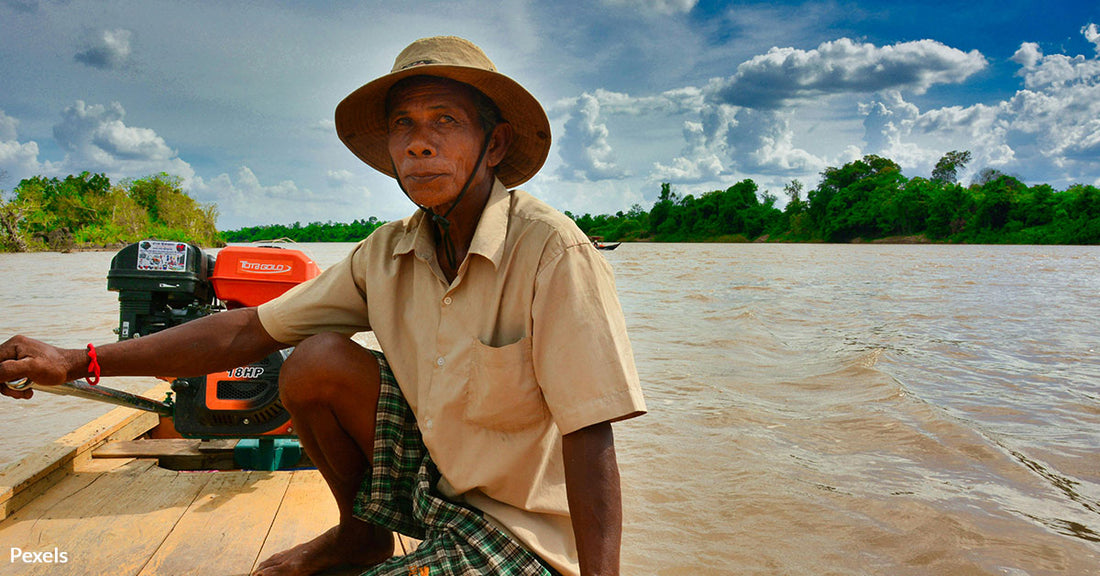7th Annual Holiday Toy & Book Event Help make the holidays brighter this year!
Mekong's Lifeline Frays as Dams Threaten Fish, Food and the Future of Local Communities
Matthew Russell
The Mekong River, an essential waterway for Southeast Asia, faces severe ecological and social upheavals due to the proliferation of dams, particularly those constructed by China.
This extensive river system, stretching over 2,500 miles from the Tibetan Plateau through several countries to the South China Sea, supports the livelihoods of tens of millions. However, recent developments have cast a long shadow over its future and that of its dependents.
 Photo: Pexels
Photo: PexelsThe Mekong River sustains tens of millions in Southeast Asia.
The Dam Effect: Biodiversity in Peril
The construction of Chinese-built dams along the Mekong has led to a stark warning from conservation groups: one in five fish species in the river is on the brink of extinction.
As the South China Morning Post reports, the fragmentation of habitats and the disruption of natural river flow are the primary culprits behind this alarming statistic.
Notably, the biodiversity loss encompasses some of the planet's largest and rarest freshwater species, underscoring the unique ecological value of the Mekong.
 Photo: Pexels
Photo: PexelsChinese-built dams threaten the river's ecological balance.
The Human Dimension: Livelihoods at Risk
The impact of dam construction extends beyond environmental concerns, striking at the heart of regional economies and food security.
For communities along the Mekong, the river is more than a body of water; it's a source of income, sustenance, and a way of life, NBC News reports. The reduction in fish populations and changes in water quality and availability pose existential threats to these communities.
 Photo: Pexels
Photo: PexelsOne in five Mekong fish species faces extinction due to damming.
Downstream Dilemmas: Sediment and Security
One of the less visible but equally significant impacts of dams is the blockage of sediment flow. This sediment is crucial for maintaining the fertile grounds of downstream regions, especially the Mekong Delta, which is pivotal for agriculture in Southeast Asia, SCMP reports.
The decrease in sediment flow results in reduced agricultural productivity, affecting food security across the region.
 Photo: Pexels
Photo: PexelsDams disrupt natural river flow and sediment transport.
A Glimmer of Hope Amidst Growing Concerns
Despite the daunting challenges, experts believe it's not too late to mitigate the adverse effects of the dams. According to NPR, coordinated efforts and sustainable development strategies could help preserve the Mekong's ecological and economic viability.
The decision by some nations to reconsider or halt new dam projects is a positive step, but the need for a comprehensive, basin-wide approach remains critical.
https://youtu.be/svmIu6v0gWQ?si=6KStNOGcoOFkBAEp
A Regional and Global Issue
The Mekong River's plight is not just a local issue but a matter of international concern. It highlights the complex interplay between environmental conservation, economic development, and regional geopolitics.
As the situation evolves, it serves as a stark reminder of the delicate balance between human activity and natural ecosystems, and the need for vigilant stewardship of our planet's precious resources, maintains Maritime Fair Trade.
The Mekong River stands at a crossroads, with its future uncertain. The decisions made today by governments, corporations, and communities along its banks will determine whether this mighty river continues to nourish the lives and lands it touches or becomes a cautionary tale of ecological and social collapse.
Click below and help us take action for threatened species and communities in the Mekong!

